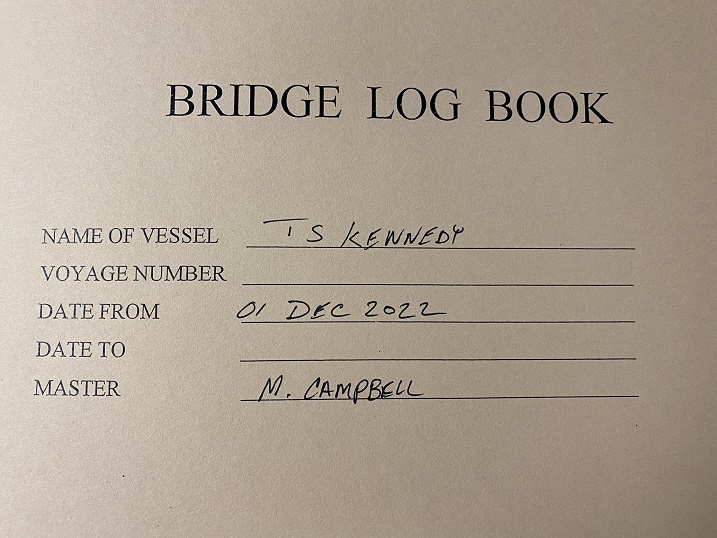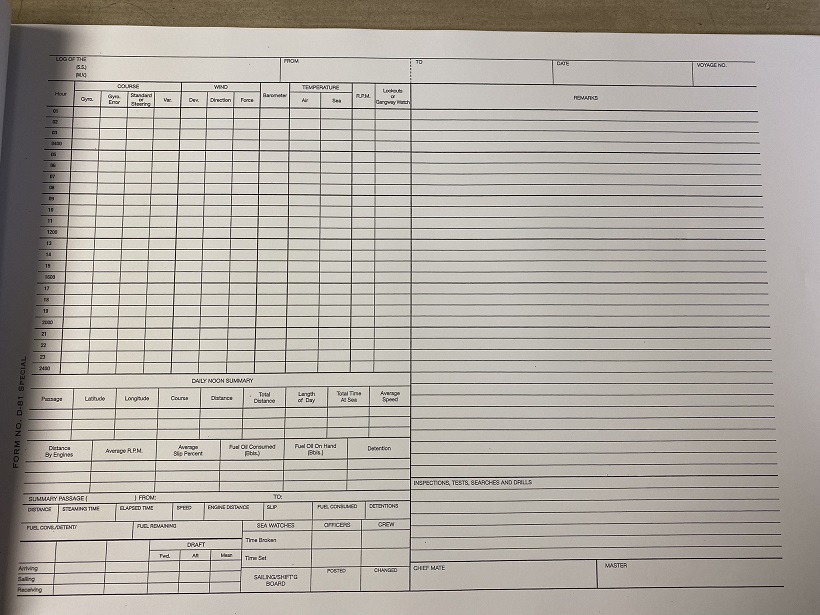
“Hello, everyone participating in the Follow The Voyage-Share The Experience Program - The Kennedy is now in Day 3 of being underway as we steam along, escaping the winter winds and embracing the increasingly warm waters. I have the pleasure of typing this blog on the Helo Deck, aft of the Mess Deck after an early morning watch shift from 0400-0800. As we make our way south, cadets gather to enjoy the warm sun on the Helo Deck any chance they get while not on watch or training.
This week, I’m on my 3-day watch cycle standing watch 0400-0800 and 1600-2000 every day. As a 3/C Bridge watch stander, I have various positions I am required to stand over during the course of a watch cycle. In the morning watch, I stood the Assistant Navigator position. The duties that come with this position revolves around managing the ship’s position on charts. Every 30 minutes we take a fix of the ship’s position, whether it be a GPS fix or a visual fix. A GPS fix position is obtained by using coordinates provided by satellites to chart our current location. A visual fix position is obtained from taking two or three bearings (angle of a charted object) of any navigational aid. This can include lighthouses, beacons, or even structures like towers. This information can be translated onto our charts to find our current position as well.
Another watch standing position I also stood today is Quartermaster. This position entails writing everything that happens on our watch in a log book. A log book keeps track of the time, people, and events that occur on the watch and is an official document that can be used in investigations for any reason. Some things I log would be logging everyone who assumes a duty (watch position), course changes, security rounds, weather, other nearby vessels, changes of speed, ship maneuvers, alarms, and any events that occur on watch. The ability to write neatly and quickly is very important. While a demanding position, it teaches you how to handle pressure and proper management of tasks.


James mentioned that the cadet or crew member writing in the Bridge Log Book must use neat handwriting. Captain Campbell is always stressing this when he is on the Bridge. The lines are also very narrow. The entries are made in black pen and cannot be erased.
When I’m not on watch today, you can find me soaking in the sun on the Helo Deck. The simplest pleasures like enjoying the weather is what makes Sea Term fun. The ability to work hard on watch or maintenance and spend every day in beautiful weather is priceless. What we are experiencing aboard the TS Kennedy would be a once-in-a-lifetime experience for most people. For Massachusetts Maritime Academy cadets majoring in Marine Engineering and Marine Transportation, being at sea is just an average winter. These opportunities will continue in our at-sea careers.
Thanks for following my blogs. Once again and as always, I am more than happy to answer any questions!”
James, thank you for this outstanding blog! It is clear that you love being at sea and have chosen the perfect career path for you. We can all feel your enthusiasm.
I am sure that teachers everywhere are thanking you for mentioning the importance of having neat printing.
We can't wait to hear from you again!